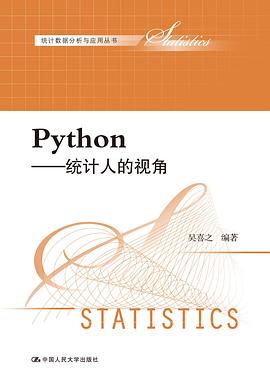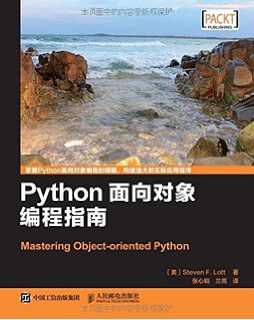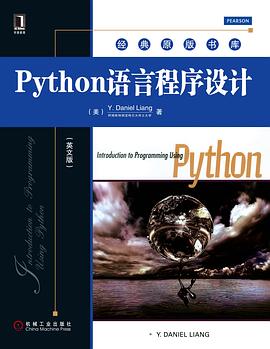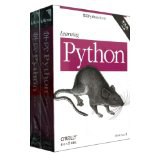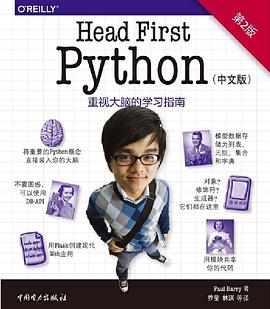
This second edition of Foundations of Python Network Programming targets Python 2.5 through Python 2.7, the most popular production versions of the language. Python has made great strides since Apress released the first edition of this book back in the days of Python 2.3. The advances required new chapters to be written from the ground up, and others to be extensively revised. You will learn fundamentals like IP, TCP, DNS and SSL by using working Python programs; you will also be able to familiarize yourself with infrastructure components like memcached and message queues. You can also delve into Network server designs, and compare threaded approaches with asynchronous event-based solutions. But the biggest change is this edition's expanded treatment of the web. The HTTP protocol is covered in extensive detail, with each feature accompanied by sample Python code. You can use your HTTP protocol expertise by studying an entire chapter on screen scraping and you can then test lxml and BeautifulSoup against a real-world web site. The chapter on web application programming now covers both the WSGI standard for component interoperability, as well as modern web frameworks like Django. Finally, all of the old favorites from the first edition are back: E-mail protocols like SMTP, POP, and IMAP get full treatment, as does XML-RPC. You can still learn how to code Python network programs using the Telnet and FTP protocols, but you are likely to appreciate the power of more modern alternatives like the paramiko SSH2 library. If you are a Python programmer who needs to learn the network, this is the book that you want by your side. What you'll learn * Understand low level networking * Handle sending and receiving email including composing and decoding emails, SMTP, POP and IMAP * Program the lower levels of web application programming such as FastCGI and WSGI and HTTP itself * Learn how to use memcached and message qeues using Python * Access web services using Python * Master multitasking with threads, forking, and asynchronous communication Who this book is for This book will be of interest to python programmers who need to program networked applications using Python. From web application developers, to systems integrators, to system administrators--this book has everything you need to know. Table of Contents * Introduction to Client/Server Networking * UDP * TCP * Socket Names and DNS * Network Data and Network Errors * TLS and SSL * Server Architecture * Caches, Message Queues, and Map-Reduce * HTTP * Screen Scraping * Web Applications * E-mail Composition and Decoding * SMTP * POP * IMAP * Telnet and SSH * FTP * RPC
具体描述
读后感
This second edition of Foundations of Python Network Programming targets Python 2.5 through Python 2.7, the most popular production versions of the language. Python has made great strides since Apress released the first edition of this book back in the days...
评分我看过了 我看过了 我看过了 我看过了 我看过了 我看过了 我看过了 我看过了 我看过了 我看过了 我看过了 我看过了 我看过了 我看过了 我看过了 我看过了 我看过了 我看过了 我看过了 我看过了 我看过了 我看过了 我看过了 我看过了 我看过了 我看过了 我看过了 我看过了 我看...
评分不知道是翻译的不行,还是原书的问题,感觉一般~~ 例子也总出错~我宁愿把时间用来重新看一遍dive in python
评分书中用例比较多,都是些短小精悍型的,所以很容易读进去,适合初学者。 书中所述范围很全,但很多只是蜻蜓点水,没有大刀阔斧地展示出Python网络编程的魅力! 我期待有本Python的书能够详细扩宽官方文档的不足。静心设计的实例是最需要的。
评分作为主流的动态语言,Python不仅简单易学、移植性好,而且拥有强大丰富的库的支持。此外,Python强大的可扩展性,让开发人员既可以非常容易地利用C/C++编写Python的扩展模块,还能将Python嵌入到C/C++程序中,为自己的系统添加动态扩展和动态编程的能力。 为了更好地利用Python...
用户评价
python now.
评分python now.
评分python网络编程比较全的入门书
评分python网络编程的英文版~ 呃其实我自己在看的就是英文版 不过封面是中文的>_<
评分收获不大
相关图书
本站所有内容均为互联网搜索引擎提供的公开搜索信息,本站不存储任何数据与内容,任何内容与数据均与本站无关,如有需要请联系相关搜索引擎包括但不限于百度,google,bing,sogou 等
© 2025 qciss.net All Rights Reserved. 小哈图书下载中心 版权所有




